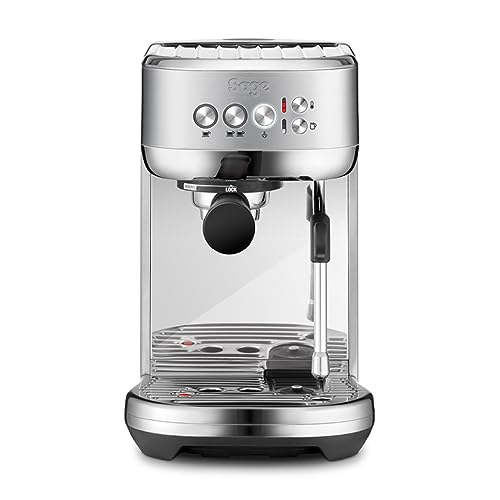What to Look For in a Commercial Espresso Machine
There are a number of things to take into consideration when buying an espresso machine for commercial use. The kind of espresso machine appropriate for your cafe will depend on the amount of use, the purpose, and barista skills.
A double boiler system provides the ability to brew and steam simultaneously. It also decreases the time between pulls. Proportional-integral-derivative (PID) temperature control manages on/off cycles for optimal boiler temperatures.
Productivity
A commercial espresso machine can handle a greater volume of coffee than an home machine. Expecting a domestic espresso machine to function in a professional setting would be an unintentional recipe for disaster.
A commercial machine of the highest quality can serve up to 100 cups per hour during peak hours. This can be a lifesaver in busy workplaces, since it will stop employees from having to wait around to get their coffee.
A coffee machine in the workplace can aid workers in bonding with one another. Oftentimes teams of people will make a habit of getting coffee, which can promote collaboration and teamwork in the workplace. A dedicated coffee area could make new employees feel more at ease in the workplace and help break down barriers between them, senior employees and other workers.
Commercial espresso machines are available in a variety of sizes to cater for different requirements. Some models are fully automatic, while others can pre-program espresso shots so that operators do not have to guess the correct size. This is particularly crucial for businesses that have untrained baristas, as incorrect shots can significantly affect the strength and flavor of espresso. Additionally, it is ideal to purchase ethically sourced and manufactured commercial espresso machines that benefit the communities where coffee is harvested. This will ensure that the coffee is of top quality and will minimize the negative impact to the environment.
Safety
Espresso machines are huge machines that weigh a lot that can cost as much as a new compact car. They're also designed to pump out a multitude of shots and drinks throughout the course of an entire day. These high-volume operations can create some unique work safety and health risks for employees, which is why it's important to take into account the potential dangers that come with an espresso machine in a commercial setting.
It's important to bear in mind that a commercial espresso machine is likely to run on warm water, which could aid in the growth of bacteria. Unmaintained machines that are not regularly cleaned and descaled can build up spent espresso. This could cause it to turn rancid, and potentially cause illness when consumed by customers. A commercial espresso machine with steam wands that are not sealed can allow bacteria to flourish in the milk foaming process.

Take into consideration the type of beverage you'll be serving and how many cups per hour your space can accommodate when selecting a commercial-grade coffee machine. It is also important to choose an espresso machine that has automation features that make it easier and faster to serve your patrons their favorite coffee drinks. Also, look for a guarantee that covers parts and labor, so that any technical issues can be dealt with quickly and efficiently.
Energy Efficiency
The power requirements for commercial espresso machines are considerably higher than those of home models. Professional espresso machines are heavier and come with larger boilers to support several group heads to support regular cafe production. These machines operate at a higher ambient temperature, and are usually located indoors (such as in a cafe or restaurant) where the electronic components may overheat.
The boiler of an espresso machine designed for commercial use heats and holds water that has been pressurized with an electric pump. The water is then used to brew and steaming espresso. The boiler is made up of several copper tubes heated by electric elements. When the brew level sensor senses that the water has reached its goal level, a solenoid valve opens to let the boiler fill with fresh water and the heating element turns off.
There are four distinct types of espresso machines. They are distinguished in their capacity to brew or steam by using TB (brewing-only), TX (twin-boilers), HX (double automated), and DA (double automated). TB and TX machines offer stable brew temperatures while DA provides rapid steaming from one boiler. HX machines are in use by many cafes since they are the best in both brew and steam temperature.
Maintenance
Like cars require routine tune-ups commercial espresso machines need maintenance to run smoothly and efficiently. If you take the time to maintain your machine in good condition, it will give you a better tasting coffee and last longer.
Cleaning your espresso machine is a daily ritual, but it's important to also clean some parts on a greater scale. There's going to be residue from milk and coffee grounds products inside the machine that can cause the breakdown of various components over time. Regular cleaning will keep your espresso machine in tip-top condition.
uk espresso machine need descaling every three months. This procedure requires a few more steps than normal cleaning, so be sure to go through your manual to ensure you're following all the directions. The solution used to decal the water tank disintegrates the scale. To do this you'll need to place an unfilled container under the steam wand or, in some models, underneath the coffee spouts. Follow the directions for your model.
A water filter change is a further maintenance task. This is a step that can easily be overlooked, but it's important to remember so that you don't end up with a build-up of mineral deposits. You should also look for calcification within the spray head, which is difficult to remove.
